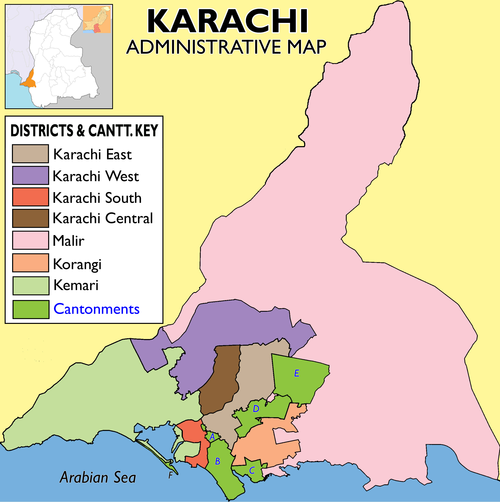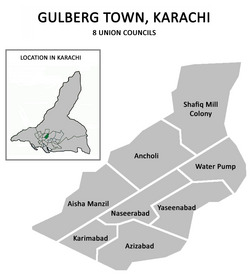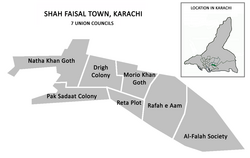This article needs to be updated.(January 2023) |
Union Councils of Karachi are local governments in Karachi.
Contents
- Union Councils of Karachi
- Baldia Town
- Bin Qasim Town
- Gadap Town
- Gulberg Town
- Gulshan-e-Iqbal
- Jinnah Town
- Kemari Town
- Korangi Town
- Landhi Town
- Liaquatabad Town
- Lyari Town
- Malir Town
- New Karachi Town
- North Nazimabad Town
- Orangi Town
- Saddar Town
- Shah Faisal Town
- S.I.T.E. Town (Sindh Industrial & Trading Estate)
- See also
- External links
Union Council is the primary governmental institution in Pakistan. Headed by a Union Nazim, each union council has 10 elected members or councilors. In addition to four male and two female members elected directly, there are two male and two female representatives of the labor, a minority member, a Union Nazim and his deputy known as Union Naib Nazim. Beside elected members, there are several government employees and functionaries in every union council, who report to the Secretary of the Union Council. The latter is a civil servant appointed by the state. The territory of a Union Council or Village Council is usually part of a Tehsil (county). Less commonly, a Union Council may be part of a City District.
















